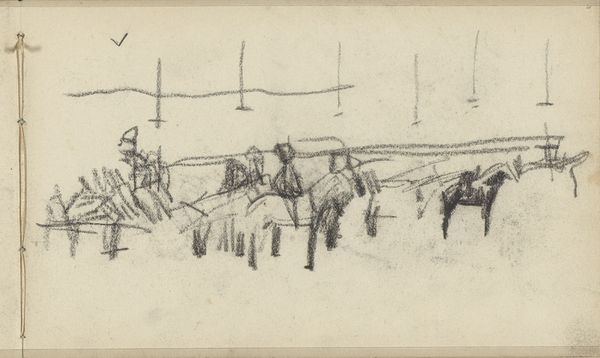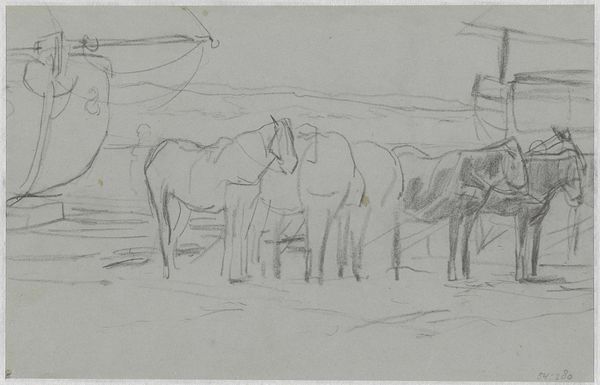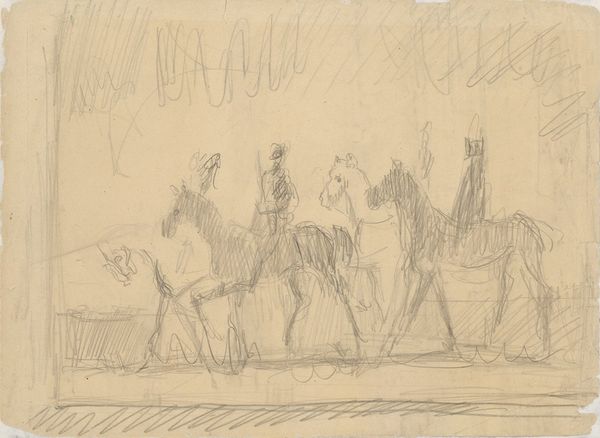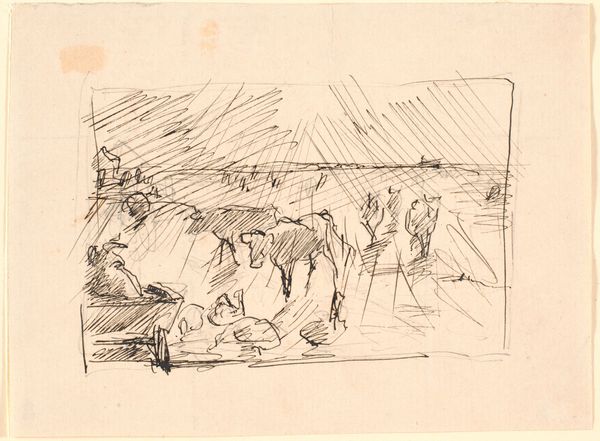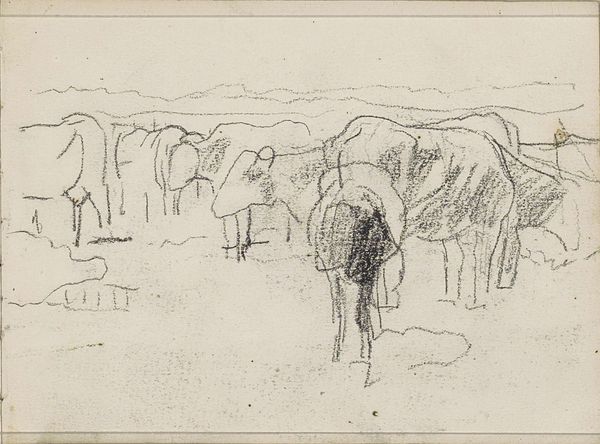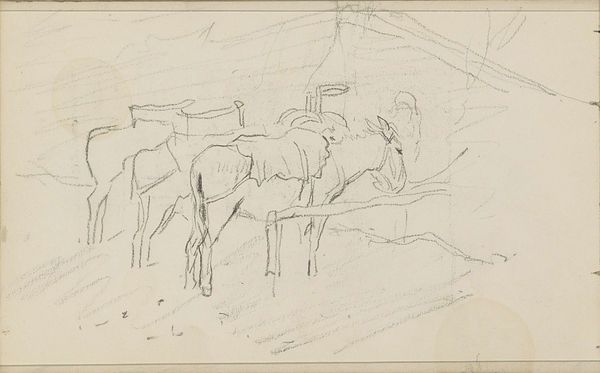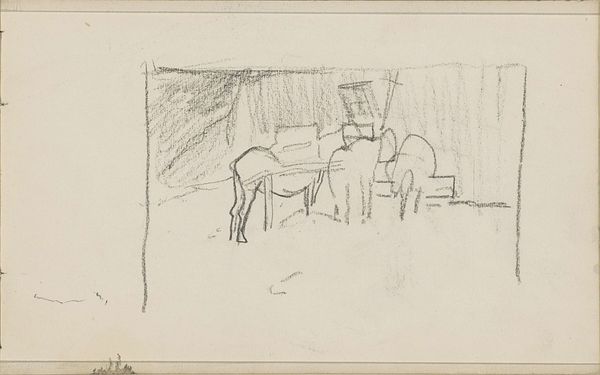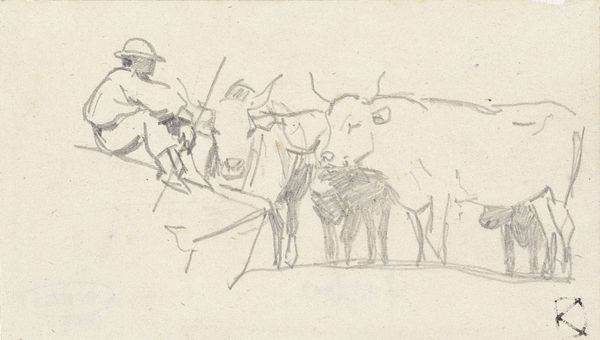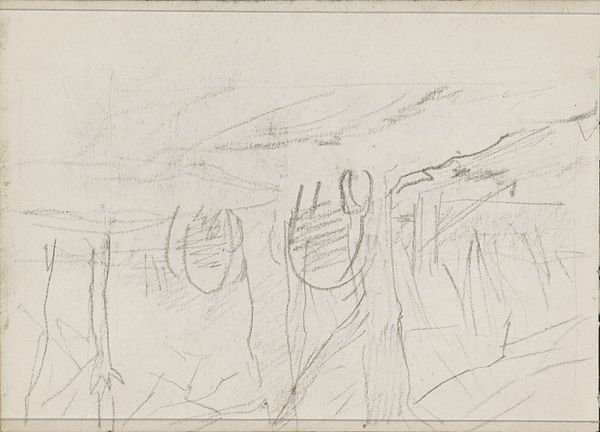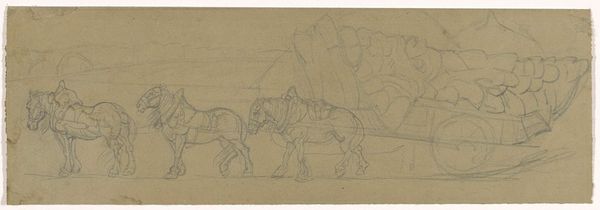
drawing, pencil
#
drawing
#
amateur sketch
#
impressionism
#
sketch book
#
incomplete sketchy
#
landscape
#
personal sketchbook
#
idea generation sketch
#
sketchwork
#
pen-ink sketch
#
pencil
#
sketchbook drawing
#
sketchbook art
#
initial sketch
Copyright: Rijks Museum: Open Domain
Curator: Looking at this page, you get the impression of something quickly captured. It's George Hendrik Breitner's "Compositiestudie met ruiters," a composition study with riders, likely created between 1886 and 1890. It’s currently held here at the Rijksmuseum. You can see he has worked with pencil and possibly ink. Editor: Yes, a sense of raw, restless energy definitely comes through. The sketchiness lends it an almost dreamlike quality, like a memory fading at the edges. Curator: Breitner was known for documenting the bustling city life of Amsterdam, particularly through photography and painting. This preliminary drawing perhaps shows his process, rapidly fixing fleeting images of daily life, like soldiers or workmen, within his sketchbooks, to be reworked later. Do you read these figures as soldiers on horses? Editor: Soldiers or laborers returning, maybe? The figures have this collective quality about them—they’re certainly not individual portraits. What resonates with me is how universally evocative the scene still is. Even though these are 19th-century riders, they reflect something primal, perhaps linked to human transit, conquest, and the domestication of animals over millennia. It is about a collective moving. Curator: It's true, this speaks beyond one singular moment. I think we can find traces in these images of Romanticism: Man in motion is always charged with dynamism and destiny, a constant pushing of limits... The very act of sketching is fascinating: you want to try an arrangement quickly to test some compositional solution, maybe just trying to suggest direction with broad strokes, which contributes to that emotional charge. Editor: Absolutely. It also invites the viewer into Breitner’s world, like a visual note left for us to find. I was thinking about the position of sketch in academic history: there were lots of atelier practices during that period, but sketchbooks had very individual character and represented something raw. You're showing the artist's "workings." What he has created *before* reaching perfection. The incompleteness becomes a source of significance. Curator: Perhaps that’s what gives it such lasting appeal. The imperfection of art-making. Thanks to this little gem, we are given access to something essential in art: process itself. Editor: Indeed, thank you for illuminating the image and the importance of what is shown through sketch, an entry point to the mind of an artist and to deeper collective meanings of artmaking through centuries.
Comments
No comments
Be the first to comment and join the conversation on the ultimate creative platform.
